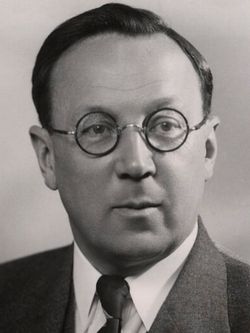
Sir Robert Alexander Watson-Watt (13 April 1892 – 5 December 1973) was a Scottish radio engineer and pioneer of radio direction finding and radar technology.
Watt began his career in radio physics with a job at the Met Office, where he began looking for accurate ways to track thunderstorms using the radio waves given off by lightning. This led to the 1920s development of a system later known as high-frequency direction finding (HFDF or "huff-duff"). Although well publicized at the time, the system's enormous military potential was not developed until the late 1930s. Huff-duff allowed operators to determine the location of an enemy radio transmitter in seconds and it became a major part of the network of systems that helped defeat the threat of German U-boats during World War II. It is estimated that huff-duff was used in about a quarter of all attacks on U-boats.
In 1935, Watt was asked to comment on reports of a German death ray based on radio. Watt and his assistant Arnold Frederic Wilkins quickly determined it was not possible, but Wilkins suggested using radio signals to locate aircraft at long distances. This led to a February 1935 demonstration where signals from a BBC short-wave transmitter were bounced off a Handley Page Heyford aircraft. Watt led the development of a practical version of this device, which entered service in 1938 under the code name Chain Home. This system provided the vital advance information that helped the Royal Air Force in the Battle of Britain.
After the success of his invention, Watson Watt was sent to the U.S. in 1941 to advise on air defence after Japan's attack on Pearl Harbor. He returned and continued to lead radar development for the War Office and Ministry of Supply. He was elected a Fellow of the Royal Society in 1941, was given a knighthood in 1942 and was awarded the US Medal for Merit in 1946.
Source : Wikipedia